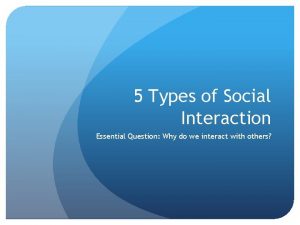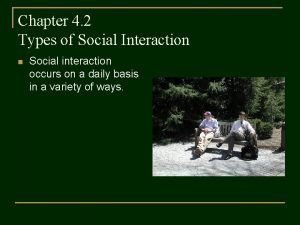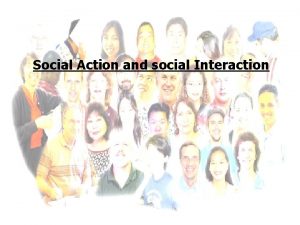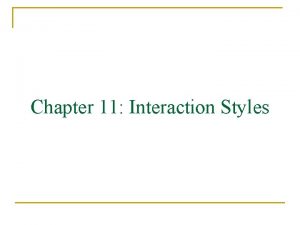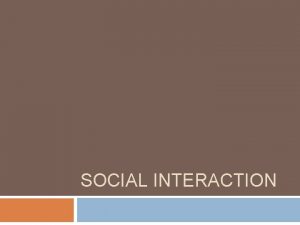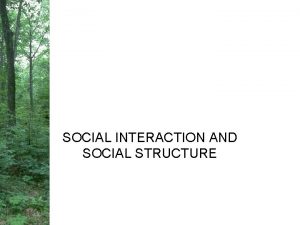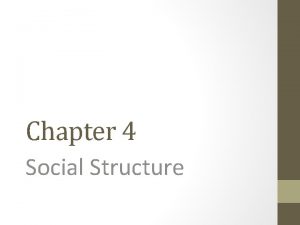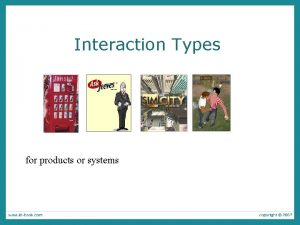Social Structure Types of Social Interaction Chapter 4








- Slides: 8

Social Structure Types of Social Interaction Chapter 4, section 2 Pgs. 69 -72

Social Interaction • When you play a role, most of the time you have to interact with others. – Among the most common forms of social interaction are • exchange, • competition, • conflict, • cooperation, • and accommodation.

Exchange • Whenever people interact in an effort to receive a reward or a return for their actions, an exchange has taken place. – Dating, family life, friendship, and politics all involve exchange. • Reciprocity: the idea that if you do something for someone, that person owes you something in return – is the basis of exchange. – Your parents will say thank-you to you for washing the dishes.

Exchange • Exchange theory: the volume of exchange in daily interactions has led to the emergency of an exchange theory. – Exchange theorists believe that people are motivated by self-interest in their interactions with other people. • In other words, people do things primarily for rewards.

Competition • Competition occurs when two or more people or groups oppose each other to achieve a goal that only one can attain. – Competition is common of western societies. – Many believe that this is the cornerstone to capitalism and the democratic system. – Advancement in business, school, and sports in achieved through competition. • Can you list some positives and negatives to competition.

Conflict • Conflict is the deliberate attempt to control a person by force, to oppose someone, or to harm another person. – Unlike competition, conflict has few rules of conduct, and even these often are ignored. • There are four sources of conflict – Wars, disagreements within groups, legal disputes, and clashes over ideology such as religion or politics. – Conflict can be a positive thing; it can lead to social changes by bringing problems to the forefront or forcing opposing sides to seek solutions.

Cooperation • Cooperation occurs when two or more people or groups work together to achieve a goal that will benefit more than one person. – Cooperation is a social process that gets things done. – No group can complete its tasks or achieve its goals without cooperation from its members. – Competition may be used along with cooperation to motivate members to work harder for their group.

Accommodation is a state of balance between cooperation and conflict. Accommodation can take a number of different forms, one of these is compromise. – Compromise • Truce: brings a halt to the conflict, until a compromise, can be reached. • Arbitration: a third party makes a decision that is binding on both parties. • These types of interaction help to ensure social stability.
